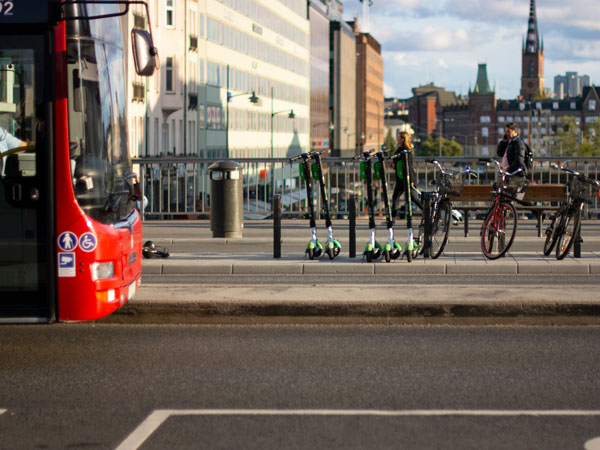The Swedish National Road and Transport Research Institute (VTI) has conducted a comparative study on vulnerable road users, their involvement in accidents and injury outcomes. The risk of serious injury was greatest for pedestrians, especially older women. Other vulnerable groups were young male moped riders and younger school-age children riding bicycles.
Most serious accidents were single-vehicle crashes, which is perhaps unsurprising when it comes to cyclists, moped riders and motorcyclists. What they have in common is that the vehicle is relatively unstable and requires focus. What the researchers did not expect, however, was the high rate of pedestrian injuries, that it is possible to be seriously injured without driving a vehicle and without high speed.

Although more women than men travelled on foot, this does not entirely explain the difference in injury outcomes, where significantly more women were injured. The accident victims were mainly women over 45, many of whom were still of working age. Osteoporosis could be a contributing factor. Pedestrians slipped and were seriously injured even in car parks. Not everything can be fixed with better road maintenance, so encouraging proper winter footwear and traction cleats can be even more important.
For cyclists, slightly more males were seriously injured, and the age group 10 to 14 years had the highest proportion. Among moped riders, more than half were between the ages of 15 and 17 and most were male. Nine out of ten motorcyclists were men, most between the ages of 25 and 64.
Including electric bicycles and scooters
Pedestrians, cyclists, moped riders and motorcyclists are counted as vulnerable road users. The category of bicycles also includes electric bicycles and electric scooters.
“Electric bicycle riders who are seriously injured are more likely to be slightly older women, while electric scooter riders are more likely to be younger and male. Electric scooters are less stable than bicycles and serious accidents often happen at night, but not always,” says project manager Jenny Eriksson.
The aim of Vision Zero is to reduce the number of fatalities and serious injuries. From this perspective, it is pedestrians who need to be prioritised first, since this category had both the highest number of serious injuries and the highest number of fatalities. Cyclists also had a high number of injuries, while moped riders and motorcyclists had about the same lower level.
On the other hand, when pedestrians killed in a fall are excluded as possibly due to non-traffic related causes, such as illness, then motorcyclists account for the highest number of fatalities of all vulnerable road users. Compared to other vulnerable road users, motorcyclists suffered the most serious injuries per trip. On the other hand, moped riders were most often seriously injured when calculated per million kilometres.
Leisure travel
Most of those seriously injured reported that they were travelling for leisure purposes. Skidding was the most commonly reported cause, with snow and ice being the most common cause for pedestrians, snow, ice and loose gravel for cyclists, and loose gravel for moped riders and motorcyclists. Unevenness, holes and potholes were also a common cause for all categories.
Although most serious accidents occur during leisure time, municipalities focus mostly on commuter travel in work on cycling infrastructure in particular. Compared to work and school trips, more cyclists and moped riders are seriously injured during leisure travel, both per 1 million partial trips and per 1 million kilometres. “More knowledge is needed here,” says Jenny Eriksson.
“We do not know whether these journeys are made on the same infrastructure as the work journeys or whether these road users use different and perhaps inferior infrastructure. The situation for pedestrians and motorcyclists is of course something that should also be studied. The question is: Does the infrastructure differ depending on the type of travel? Or could this be partially explained by other factors, such as darkness, different behaviour of the cyclist, or equipment?”.
Text: Gunilla Rech/VTI.
Translated by: CBG Konsult & Information AB.

Jenny Eriksson
jenny.eriksson@vti.se
VTI, Swedish National Road and Transport Research Institute
Sweden






Follow us: